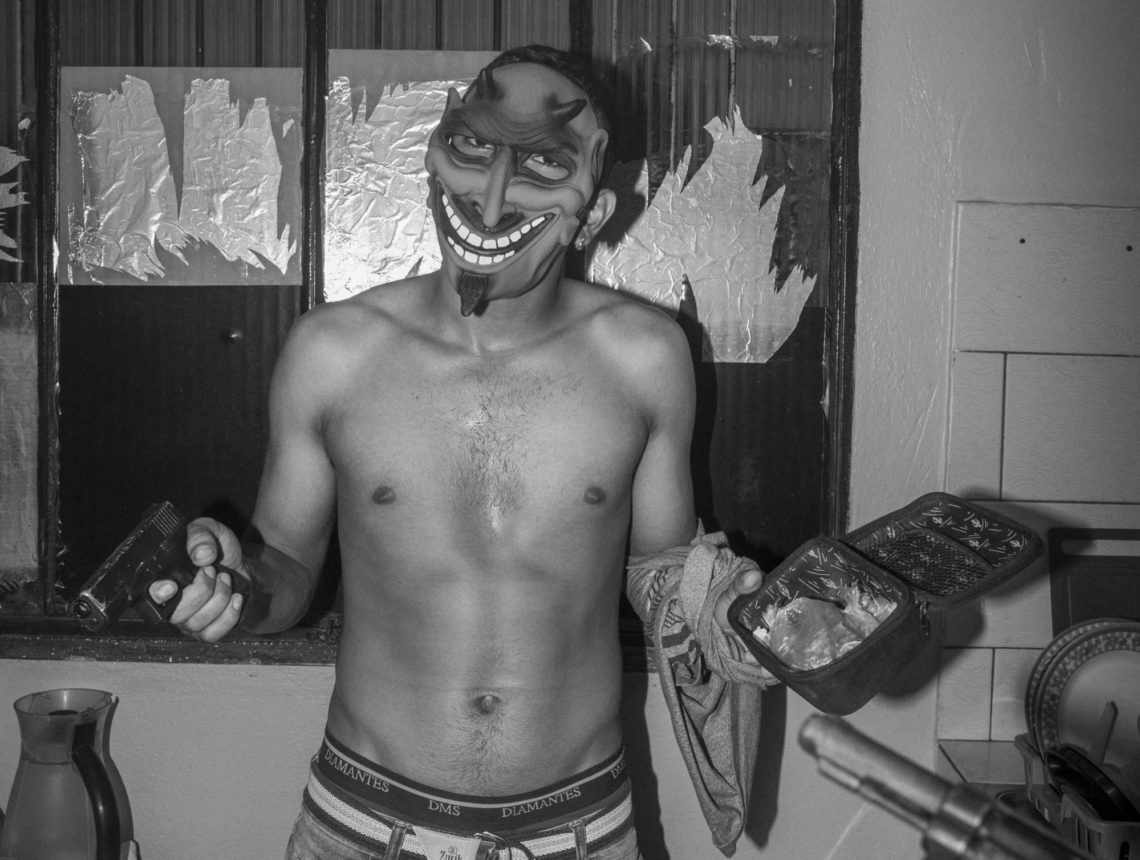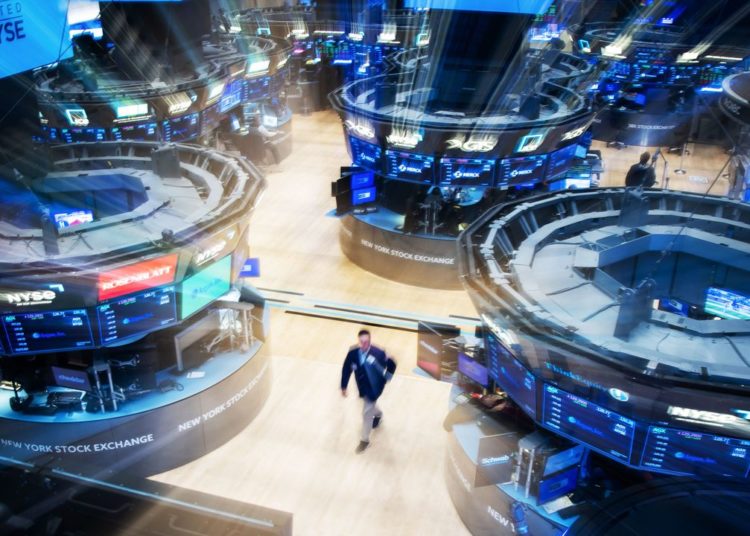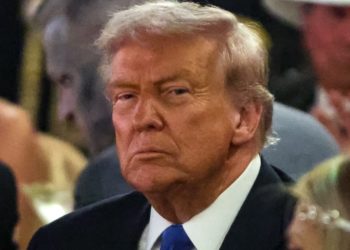There is the popular image of Brazil; of carnival culture, golden beaches, unspoilt nature, and experimental architecture. And then there is the Brazil that lurks beyond the prying eyes of the average tourist; of rife inequalities, brutal violence, and hellish destruction. For over a decade, the award-winning Italian-born photographer Tommaso Protti has been living in the country and capturing the darker realities of life in Latin America.
He’s taken his camera to overcrowded prisons and uncleared murder scenes, followed drug dealers on their rounds, and joined migrants as they’ve endured perilous treks through the jungle. His images are bold, brave, and challenging, and each of his projects—whether it’s about deadly rural conflicts or gang crime in the cities—works to destroy your common misconceptions while raising myriad new questions.
VICE spoke to Protti, who’s currently based in Sao Paulo, and unpacked some of his most impactful work.
VICE: Tell us how you first started covering crime, violence, and inequality in Brazil.
Tommaso: I wanted to do long-term projects and one of the topics that interested me right away was violence. As a European, the violence that you experience here in Latin America is totally different. When I moved here, I had a one-year-old girl, and I immediately felt this sense of insecurity; the everyday violence. Brazil is a country that experiences an average of 40,000 homicides per year. But it’s not just the homicides and the amount of guns in the country; it’s the inequalities, the history. Latin America has been shaped by violence, through slavery, colonization, independence, and the formation of states. There is a long history of inequalities, and inequalities drive violence.
Let’s talk about your project, Terra Vermelha [Red Earth]. There is a fantastic quote that describes it as “a stark, unromanticized portrait of the contemporary Amazon—not as a pristine sanctuary, but as the stage for a modern dystopia.” Tell us about this dystopia.
I started Terra Vermelha as soon as I arrived in Brazil. It’s a project about the Brazilian Amazon, and the connection between the environmental crisis and the social crisis taking place in this region. When I first arrived there my head was full of cliches. I thought it was just going to be lots of nature and indigenous tribes. After just one trip, I realized the story was so much more complex. The modern Amazon is like a new Wild West, a lawless frontier.
The first commission I did there was about the environmental impact of the newly built Belo Monte Dam, the biggest dam in the Amazon. I thought I’d spend my time wandering through the forest, but I ended up spending it all in the nearby city of Altamira, because that was where the most direct social impacts were being felt. The building of the dam had attracted thousands of people from all over searching for construction work, and Altamira had become known as one of the most violent cities in the country. It was full of homicides, organized crime, prostitution, and addiction. I found myself mostly covering crime scenes and destitution. This opened my eyes to the hidden urban side of the Amazon; cities like Manaus and Belem.
Why have these cities become so violent?
The Amazon river itself is one of the main drug trafficking routes in Latin America, so Manaus and Belem are strategic centers for distribution and even consumption, because Brazil is now the second largest consumer of cocaine in the world after the U.S. and the first consumer of crack cocaine in the world. So I decided to focus on all of these issues in the Amazon, and I decided the best way to do it was a long-term project that was built up like a mosaic, showing all these different issues side by side.
What are the other big issues in the region?
A big problem is rural conflicts: around 50 percent of rural land in Brazil is owned by 1 percent of landowners. This has created conflicts among landless peasants living in camps who are demanding agrarian reform. So I started documenting massacres, police killings, and the occupation of public lands. I also visited some very isolated villages where indigenous tribes are trying to maintain their traditional way of life amid the threat of illegal gold mining. But I wanted to avoid romanticizing too much, so I also documented communities of indigenous people living in cities.
All of this before we’ve even mentioned deforestation.
Exactly, the most important issue, because the Amazon is reaching a tipping point, according to scientists. So I came to realize that this is an extremely complex region, and I wanted to show how all of these issues and stories overlap with each other. I think when most people hear about the Amazon today, they think of the nature and how it is under threat, and therefore the main question is how to avoid this. But after focusing on all these social issues in the region, I’ve come to the opinion that you can’t preserve nature in the Amazon without improving the lives of the people living in this region. So Terra Vermelha is not necessarily about ‘nature;’ it’s about human nature.
What has shocked you the most while shooting this project?
On one trip I followed an indigenous group in Araribóia, Maranhão state. They had created a small armed group called Guajajara Forest Guard to protect their lands against the illegal loggers. I followed them as they were chasing illegal loggers and destroying their camps. I became really close to one of the members, Paulo Paulinho. But two months after my visit he was killed in an ambush by the illegal loggers. He was an indigenous leader, but he was still really young, only 24 years old. At that moment, I realized how unpredictable and fragile everything was in the region. He was so committed to protecting nature, but I wondered if he was truly aware of the dangers facing him. These killings of indigenous leaders, activists, and landless peasants go largely unreported on.
Let’s talk about Tropic of Violence, a project of yours focusing on the homicide rate.
There have been times in recent years when Brazil’s homicide rate has gone above that of countries experiencing civil war, and I wanted to understand how this violence was impacting the lives of common people. I covered hundreds of crime scenes during these years, but I was less interested in photographing dead bodies and more in capturing the scene itself, and what is going on around the body. Through that, I’ve noticed how normalized violence has become. Crowds will gather and watch over the crime scene like it’s a show. There will be kids playing nearby, eating ice cream, and people carrying on with their lives, while dead bodies still lie in the street. That was shocking to me.
I took the mosaic approach again with Tropic of Violence, showing different scenes to illustrate the issues. I got access to drug dealers and gangs, and visited prisons. Brazil has one of the biggest prison systems in the world, and it’s totally overcrowded and controlled by crime organizations. I also portrayed lives in the community to illustrate how violence and inequality are deeply connected. Young black men from impoverished communities usually end up being the most frequent victims of these crimes. And I spent time with relatives of the victims of homicides to get a deeper understanding of these problems and conflicts.
Lastly, let’s talk about your project, The Path, which studies the nightmarish journeys undertaken by migrants wishing to travel to the U.S. from South America. You focus a large part of this project on a 100km stretch of land known as the Darién Gap at the Colombia-Panama border, which is the only land bridge between South and Central America. For migrants unable to travel by air or sea, this perilous and roadless route of mountainous and swampy rainforest—as well as criminal groups who profit from smuggling and extortion—is the only option. Am I right in thinking you undertook the journey alongside migrants to get these images?
Yeah, and it was the toughest experience I’ve ever had in my life. Migrants take this journey with the dream of reaching the U.S. but not even the Pan-American Highway crosses the Darién Gap, it’s the only interruption, so you have to cross it by walking. When I was there [in 2024] there were 2000-3000 people setting off every day. They were mainly coming from Venezuela, Ecuador, Colombia, and Haiti, but there were also people from Asia and Africa.
What was your journey like?
It took me seven days. You’re climbing hills and scrambling down muddy paths; you have to cross rivers all the time. It’s a really risky environment, not just because of threats from nature, but also local gangs. In Colombia it’s a little safer, because everything is controlled by the Gulf Clan [a right-wing Colombian neo-paramilitary group, and the country’s biggest drug cartel]—all the migrants pay them a fee of around $400 before starting the journey. But once you enter the Panama side of the border, you are in no man’s land, and there are a lot of cases of rapes, assaults, and murders. During my crossing, I saw people die from drowning—it’s a common cause of death on the trail because you’re crossing big rivers with strong currents. There is an incredible amount of garbage all around you in the jungle, because thousands of migrants were walking through each day and leaving their trash.
This sounds like hell on earth.
It is, but many people start the journey without realizing how difficult it will be. They don’t have access to the proper information. They are told it will be over in two days, and lots of them run out of food. I started sharing my rations, because I knew what was coming and I was prepared. The rivers are so polluted that you can’t drink the water unless you have a filter. And there are lots of children, so there is always the sound of crying. It was really impactful.
From what I understand, once these migrants arrive in southern Mexico, they try to board an open top freight train—known as La Bestia (“The Beast”) or El Tren de la Muerte (“The Train of Death”)—to continue to the U.S. on their journey. This train has become infamous for kidnappings, rapes, and horrific injuries. What did you witness on The Beast?
Firstly, it’s not just one train, it’s a route, but everyone calls all the trains on this route “The Beast.” Sometimes the trains don’t stop and you just have to jump on or off, and a lot of people die from falling. Sometimes you’re sitting between containers, sometimes inside containers if they are empty. But it’s not just the train itself, it’s the environment you’re traveling through. It took us one week to cross only half of Mexico, and sometimes the train was waiting in areas controlled by cartels that are really dangerous. Then there are the weather conditions. While we were crossing at night, the temperature in the desert dropped to -8°C. I was prepared because I’d been told about it, but many of the migrants were not. They didn’t have enough clothes, so there were a lot of people close to hypothermia and kids crying with blood dripping from their noses because of the low temperatures.
Have you stayed in touch with some of the people you crossed with?
Yes, and that is what has shocked me the most. I met a family during the crossing, and I went to meet them again in Mexico this year. They had been kidnapped twice since arriving in Mexico, and experienced a lot of discrimination. After everything they had experienced on this journey—one of the toughest things a human could do, especially for families carrying their children—they told me the Darién Gap was nothing compared to Mexico.
They are trapped there now, because of Trump’s new immigration rules. They aren’t alone: crossings through the gap have dropped nearly to zero now that Trump has slashed access to asylum, and thousands of migrants are stranded across Mexico and Central America. They can’t get to the U.S. and they can’t get back to their own country, without going back the way they came. It’s unbelievable.
Follow Tommaso on Instagram @tomprotti
The post How I Photographed the Most Violent Places in South America, and Survived appeared first on VICE.




